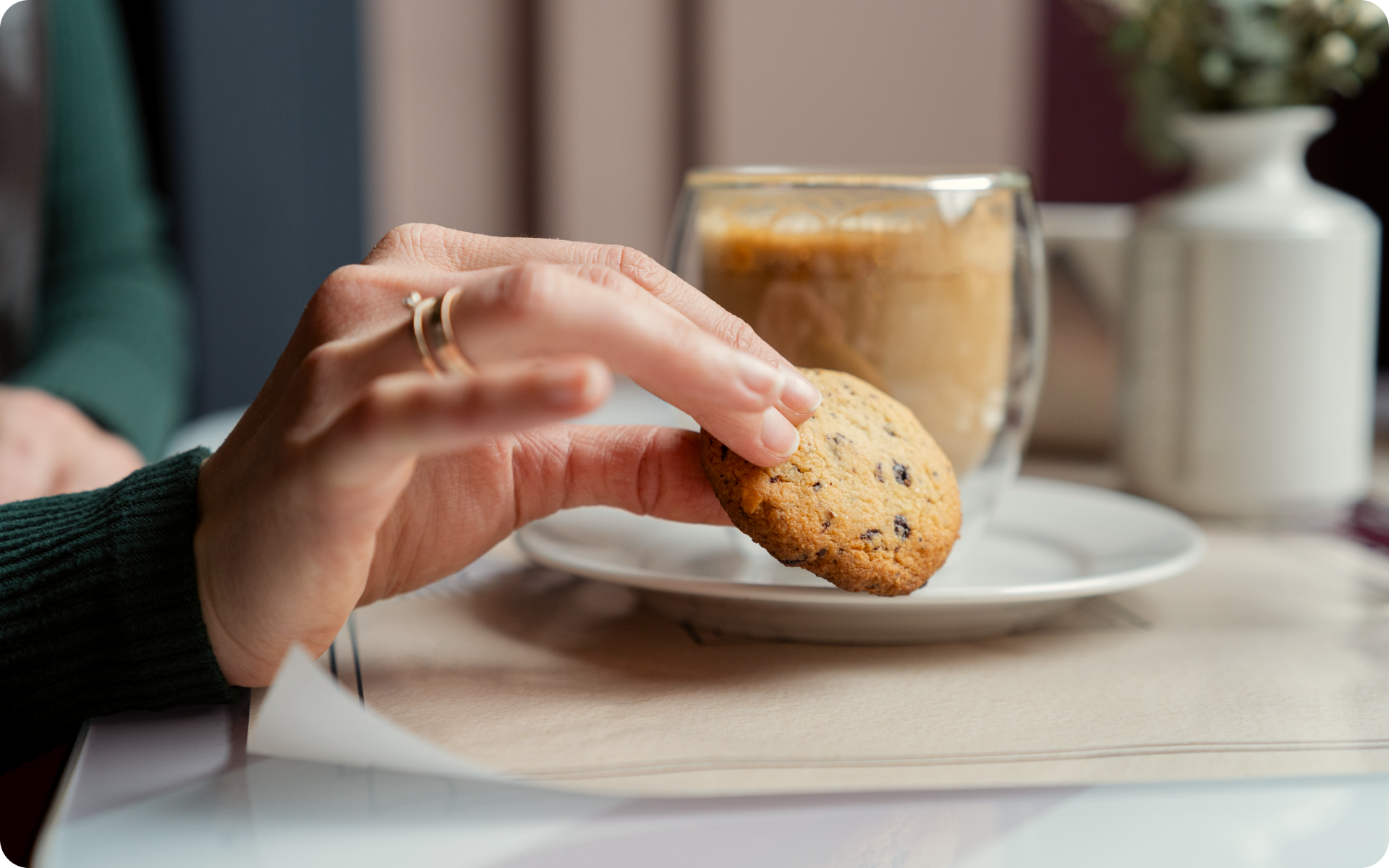What Is 20/4 Intermittent Fasting?
Successful weight management is based on counting calories. If your goal is to slim down, you need to reduce your caloric intake and create a caloric deficit; if you want to bulk up, you need to make sure that you eat a calorie surplus; and if you simply want to maintain your current weight, you continue following your regular diet. But what if you don’t like counting calories? Is there a diet that can help you reach your weight goals without having to track the energy contents of your every meal? Luckily, there is! The so-called ‘diet’ in question is known as intermittent fasting. Intermittent fasting is an eating pattern that has been widely accepted by many people trying to lose weight. Of all the different methods to do it, intermittent fasting 20/4 is one of the stricter versions. What are some intermittent fasting 20/4 benefits? Is intermittent fasting 20/4 everyday healthy and sustainable long-term? Read on to find out this and more.
The intermittent fasting 20/4 method is also known as “The Warrior Diet.” This diet was created in 2001 by Ori Hofmekler, an Israeli Special Forces member turned health and fitness author. It is important to note that the warrior diet is not based on science but rather a deduction of Ori’s experiences while he worked in the military (22).
Also, some supporters of this eating pattern claim that humans are natural nocturnal eaters and that eating at night allows the body to gain nutrients in line with its circadian rhythms (16).
What Are Other Types Of Intermittent Fasting?
As stated above, intermittent fasting 20/4 is just one of the eating patterns under the umbrella of intermittent fasting. Other methods include (16):
-
The 12-Hour Fast
This gives you a 12-hour eating window. This type of intermittent fasting is one of the easiest to follow since you can spend most of the fasting time sleeping. For instance, if you go to bed at 10 p.m., and wake up at 7 a.m. then you have only 3 hours left to fast. So, you can have your breakfast at 8 a.m., and your dinner at 8 p.m. As you can see, the 12-hour eating window is pretty big and flexible, so you can adjust your meal schedule according to your preference.
-
The 16-Hour Fast
This is the most popular type of intermittent fasting, especially among beginners. The 16/8 method gives you an 8-hour eating window.
Read More: 30 Day Fast Weight Loss: Can You Fast Your Way To Fat Loss?
-
The 5:2 Method
Another popular variation is the 5:2 diet. It does not rely on hours to define the eating windows. On this variation, participants eat normally for 5 days a week and drastically cut down their caloric intake on the remaining 2 days. On the 2 fasting days, men and women generally consume 600 and 500 calories, respectively. For health reasons, these two days are not practiced back to back, i.e., you can fast on Tuesday and Thursday but not on Tuesday and Wednesday.
-
The Alternate-Day Fast
This is a bit like the 5:2 diet, but it involves fasting every other day instead of just two days a week. There are no specific rules for this as some people live on a liquid diet on the fasting day while others allow up to 500 calories on these days.
-
The 24-Hour Fast
It is also known as the “Eat-Stop-Eat Diet.” In this variation, people go for 24 hours without eating anything. It can be done either once or twice a week, and followers of this method drink unsweetened coffee or tea, water, and other calorie-free drinks.
-
Meal Skipping
The name translates to the method. You are not regulated by any hours or caloric intake. With this variation, you just opt for which meal to skip per day.
-
The OMAD Diet
Also known as the “One Meal A Day Diet,” is referred to as a more strict version of intermittent fasting 20/4. People do OMAD fast for 23 hours a day, which gives them a 1-hour eating window. OMAD does not require you to count calories neither are there any food off-limits on this eating plan. However, healthy and nutrient-rich foods are encouraged for weight loss and health reasons (18).
If you wish to cinch your waist, tone up your bat wings, blast away the muffin top – our fitness app was created to cater to all your needs! BetterMe won’t give excess weight a chance!
How To Properly Do Intermittent Fasting 20/4?
When people choose intermittent fasting 20/4, many assume that it just involves cutting down your feeding window to only four hours a day. While this is essentially what a 20-hour fast means, many people are unaware that Ori Hofmekler, the diet’s developer, created an initial 3-week, 3-phase plan.
According to Ori, this plan and its phases are necessary as they give your body a chance to get used to the Warrior Diet, improving its ability to utilize fat for energy. The plan is as follows (23):
Week One – Phase One
This is also known as the detox period. During this phase, Ori states that you should:
1. Undereat during the 20-hour fast window – Undereating means that you can have small amounts of foods like hard-boiled eggs, raw vegetables and fruits, yogurt, and cottage cheese. In terms of drinks, you can have broth, milk, or vegetable juices, albeit in small amounts. You may drink water, coffee, and tea.
2. The Overeating window – During these 4 hours, Hofmekler suggests that you break your fast by consuming a salad with oil and vinegar dressing. After this, you can have one large meal or multiple smaller meals that you can fit within these few hours. Your meals should be made up of whole grains, plant-based proteins like beans, and more vegetables.
Week Two – Phase Two
This is known as the high-fat week. The rules for this phase are as follows:
1. The Undereating window – During these 20 hours, you should consume the same small amounts of foods, vegetable juices, milk, and clear broth like you did in the first week.
2. The Overeating window – During these 4 hours, you are not allowed to consume whole grains, other starchy food, or carbohydrates like you did in the first week. Instead, you will break your fast by consuming a salad with an oil and vinegar dressing, then your next meal (or smaller meals) should consist of cooked vegetables, nuts, and animal protein.
Week Three – Phase Three
This is known as the “concluding fat loss week” or the “high-carb high-protein cycle.” During this week, your food consumption should be as follows (22):
- 1 to 2 days high in carbs
- 1 to 2 days high in protein and low in carbs
- one to two days high in carbs
- 1 to 2 days high in protein and low in carbs
High-Carb Days
1. Undereating window – Eat the same foods that you had been eating during the first week.
2. Overeating window – Break your fast with the same salad that you have been having. The next large meal or smaller meals should consist of cooked vegetables, some animal protein, and one main source of carbohydrates like corn, rice, potatoes, whole-wheat pasta, barley, or oats.
High-Protein – Low-Carb Days
1. 20-hour Underfeeding window – The same foods and drinks that you have been having throughout the previous weeks.
2. 4-hour Overfeeding window – Break your fast with the same salad, and the next meals should have 227 to 454 grams (total) animal protein and some cooked, non-starchy vegetables.
3. Fruit – While you should not consume grains or starchy veggies during these days, you can have some fruit if you are still hungry at the end of the night.
Once you have completed this 3-week phase, you are supposed to start it all over again. If this suggestion does not appeal to you, just stick to the undereating rules set for the 20 hours and then consume healthy, high-protein meals in the 4-hour overfeeding window.
What Should I Eat With 20/4 Intermittent Fasting?
Now that you know how to effectively follow the intermittent fasting 20:4 rules, your next step is to make a meal plan. Meal planning is an easy way to ensure that you always have meals at the ready for whenever you break your fast. This ensures that you always have healthy meals or snacks, which prevents you from consuming unhealthy food options.
Read More: How Often Should You Eat To Lose Weight: Settling This Debate Once And For All
Since intermittent fasting is an eating plan and not a diet, people do not have any strict regulations on what kinds of foods or drinks they should eat during the feeding window. However, the warrior diet stands out as it offers some guidelines on how to eat. Your meals should make up a balanced diet, which is a diet that gives your body enough nutrients to work effectively, protecting itself against disease, infection, fatigue, and low performance (2).
With that in mind, here are some foods that should be included in your 20/4 intermittent fasting meal plan or grocery list. Not only will these foods help with your weight loss goals, but they are also good for your overall health.
-
Complex Carbohydrates
Complex carbs are foods such as whole wheat, brown and wild rice, oats, and quinoa, among others. Not only do they have more nutrients than simple carbohydrates, but they are also great for your digestive and heart health (17).
When fasting for 20 hours, you will end up feeling quite hungry, and sometimes the suggested foods for the undereating window are just not enough to curb the hunger. Foods high in fiber keep you fuller for longer and may help you not feel hungry early in the day, making your fast easier (5).
-
Dark Leafy Greens
Include leafy greens in the salad to break your fast. Not only are they low in calories, carbs, sodium, and cholesterol, but they also have high levels of fiber, iron, magnesium, potassium, and calcium (4). Popular examples of dark leafy greens include bok choy, arugula, Swiss chard, kale, collard greens, and Romaine lettuce (21).
-
Fruits
As mentioned above, fruits can be consumed as dessert during week 3 – phase 3, or throughout the diet during the underfeeding window. Fruits are an excellent source of essential vitamins and minerals. Not only are they high in fiber, but they also provide a wide range of health-boosting antioxidants (24).
Some healthy fruits that should be included in your 20/4 intermittent fasting meal plan include apples, lemons, kiwis, strawberries, bananas, grapefruits, black and blueberries, passion fruits, watermelon, and pineapples, among others.
-
Lentils And Legumes
They are naturally low in fat, practically free of saturated fat, and provide protein, complex carbohydrate, B vitamins, iron, copper, magnesium, manganese, zinc, and phosphorus (12). They are also high in fiber, which means that they are quite filling and will keep you from feeling hungry too early in the day.
-
Oily Fish
Examples include trout, tuna, salmon, mackerel, herring, sardines, and pilchards. They are rich in protein and omega-3 polyunsaturated fatty acids, which help reduce inflammation and may help lower the risk of heart disease, cancer, and arthritis (8).
-
Lean Proteins
A high protein diet is part of the phase three-cycle. In your diet, proteins help with weight loss by increasing the satiety hormones while reducing levels of the hunger hormone, ghrelin. Proteins also boost your metabolism, making you burn calories faster (9).
Lean proteins are better since they have less saturated fat. Types of lean meat include examples such as lean cuts of beef, lamb, veal, pork, chicken, turkey, duck, and seafood like crab, lobster, mussels, oysters, scallops, and clams. Eggs are also a fantastic source of lean protein.
-
All Kinds Of Vegetables
A diet rich in vegetables and fruits can help lower blood pressure, reduce the risk of heart disease and stroke, prevent some types of cancer, lower the risk of eye and digestive problems, and positively affect blood sugar levels, which can help keep appetite in check (25).
There are starchy and non-starchy vegetables:
- Non-starchy veggies include cucumbers, eggplants, amaranth, Brussels sprouts, cabbage, cauliflower, celery, mushrooms, okra, peppers, squash, asparagus, bean sprouts, and more (13).
- On the other hand, starchy vegetables include yams, white potatoes, plantain, sweet potatoes, beans, corn, pumpkins, winter squash, and more (19).
BetterMe is your fast-track ticket to a long-lasting weight loss! Tailor your fitness journey and maximize your results with just a couple of swipes!
-
Water
Drinking plenty of water is as important as eating healthy. Proper hydration is essential for a lot of processes in your body. As you already know, during the fast you can only drink water, but that doesn’t mean that you can forget about hydration during your eating windows. Make sure to always stay hydrated, and drink a glass of water right after you wake up, before and between meals, before, during and after a workout, and before going to bed.
In general, an average adult person should drink about 8 glasses of water per day, but the best indicator is your thirst, so drinking whenever you feel like it is the best option. If you don’t like plain water, you can drink unsweetened tea or coffee. Another great option is flavored water. It is very easy to make and besides hydration can provide you with various vitamins and minerals. All you need to do to make flavored water is to leave an ingredient of your choice in water for some time. The best flavored water for weight loss includes lemon water, cucumber water, aloe water, oatmeal water, and others.
Healthy Intermittent Fasting 20/4 Recipes
Knowing what to eat on the intermittent fasting 20/4 is good, but being able to combine the recommended ingredients into a delicious and healthy meal is even better. There is no need to trawl through the endless rabbit hole of recipes online because this article has got you covered. Here are the best healthy and tasty recipes for your intermittent fasting 20/4 menu:
Mushroom, Spinach & Potato Pie (26)
This super easy and delicious mushroom, spinach and potato pie is perfect for meal prep or a family dinner. It is also meat-free and vegetarian-friendly.
Ingredients for 4 servings:
- 400g (14 oz) baby spinach
- 500g (17.6 oz) mushroom
- 300g (10.5 oz) cooked new potatoes, cut into bite-sized pieces
- 300g (10.5 oz) each green beans and broccoli, steamed
- 1 cup vegetable stock
- 2 garlic cloves, crushed
- 1 tbsp olive oil
- 1 tbsp grain mustard
- 2 heaped tbsp light crème fraîche
- 1 tsp freshly grated nutmeg
- 3 sheets filo pastry
Directions:
- Preheat the oven to 200-180°C or fan/gas 6. Wilt spinach in a colander by pouring a kettleful of hot water over it.
- Heat ½ tbsp oil in a large nonstick pan and fry mushrooms on high heat until golden. Add garlic and cook for 1 min, then tip in stock, mustard, nutmeg, and potatoes. Bubble for a few minutes, season, and remove from the heat. Add crème fraîche and spinach. Pour the mixture into a pie dish and allow to cool.
- Use the remaining olive oil to brush the filo. Quarter sheets then loosely scrunch up and lay on top of pie filling. Bake for 20-25 minutes until golden. Serve with vegetables.
Nutritional value of 1 serving:
Calories: 215, carbs: 29g, fats: 8g, protein: 9g
Spiced Carrot & Lentil Soup (27)
This rich in flavor carrot and lentil soup is extremely nutritious and filling while being low in calories. Best for lunch, this soup will ensure that you reach your body goals without sacrificing the taste.
Ingredients for 4 servings:
- 600g (21 oz) carrots, washed and coarsely grated
- 140g (5 oz) split red lentils
- 4 cups hot vegetable stock
- ½ cup milk
- 2 tsp cumin seeds
- 2 tbsp olive oil
- Pinch chili flakes
- Plain yogurt and naan bread to serve
Directions:
- Dry-fry cumin seeds and chili flakes in a large saucepan for 1 min.
- Scoop out about half with a spoon and set aside. Add olive oil, coarsely grated carrots, red lentils, vegetable stock, and milk to the pan and bring to the boil.
- Simmer for 15 mins until the lentils have swollen and softened.
- Whizz the soup until smooth (or leave it chunky if you prefer.
- Season to taste and finish with a dollop of plain yogurt and a sprinkling of the reserved toasted spices. Serve with warmed naan breads.
Nutritional value of 1 serving:
Calories: 238, carbs: 34g, fats: 7g, protein: 11g
Thai Prawns With Pineapple & Green Beans (28)
Filled to the brim with proteins, these Thai prawns with pineapple and green beans are a gastronomic masterpiece. They are quite easy to make and take not that much time
Ingredients for 2 servings:
- 100g (3.5 oz) green bean
- 100g (3.5 oz) fresh pineapple chunks
- 200g (6 oz) raw king prawn
- 100g (3.5 oz) whole cherry tomato
- Thumb-sized piece of ginger, shredded
- 1 tbsp vegetable oil
- 2 lemongrass stalks, tough outer leaves removed, the rest finely chopped
- Small pack Thai basil leaves
For the sauce:
- 4 tbsp lime juice, plus wedges to serve
- 2 tbsp liquid chicken stock
- 1 tbsp fish sauce
- 1 tbsp soft brown sugar
Directions:
- Mix all the sauce ingredients together in a small bowl and set aside.
- Heat the oil in a large wok and saute the lemongrass and ginger until golden. Add the pineapple, beans, and cherry tomatoes, and stir-fry for 3-5 minutes, until the beans are just cooked. Add the prawns and the sauce and stir-fry for another 3-5 minutes. Throw in most of the basil leaves. Serve with lime wedges and the remaining basil leaves scattered over.
Nutritional value of 1 serving:
Calories: 228, carbs: 20g, fats: 7g, protein: 22g
What Are Some Intermittent Fasting 20/4 Benefits?
If you are wondering, “how does 20/4 intermittent fasting affect the body?” Here are some benefits that may be experienced while following the warrior diet include:
1. Weight Loss
A controlled trial published in 2009 showed that people who followed an eating pattern that closely resembled the 20/4 intermittent fasting method lost more weight than those who ate the same amount of calories but consumed them in several meals throughout the day (1). It is believed that you lose weight through fasting because it is harder for you to eat as many calories during a small feeding window.
2. May Help Protect Against Alzheimer’s
Note that these results are from research done on animals (mice) and not humans. In 2017, a study posted online revealed that intermittent fasting, in general, may help protect against Alzheimer’s disease through the restoration of Aquaporin-4 Polarity (11). Later in 2018, another study suggested that intermittent fasting protects against this disease through the increase of lipoproteins to the brain (10).
3. May Improve Blood Sugar Levels
Intermittent fasting is generally associated with improving blood sugar control and insulin sensitivity (20). A pilot study done in 2017 showed that fasting for 18 to 20 hours a day could lead to weight loss and post-meal blood sugar control (6). This shows that fasting could be extremely beneficial to patients with type 2 diabetes. However, if you are suffering from this disease, please talk to your doctor before trying the 20-hour fast, or any other form of intermittent fasting.
4. May Help With Inflammation
Some types of intermittent fasting have been associated with a decrease in chronic inflammation (15). While this research did not involve the intermittent fasting 20/4 method, you may still reap the same benefits. Excess inflammation can lead to illnesses such as heart disease, diabetes, some cancers, bowel disorders, and more.
Are There Any Side Effects Of Intermittent Fasting 20/4?
Yes, there are. Some downsides of participating in a fasting eating plan include:
- May lead to a binge-eating disorder – This is a serious eating disorder in which you frequently consume unusually large amounts of food and feel unable to stop eating. Fasting has been linked to the increase in the onset of binge-eating (7).
- May lead to nutrient deficiencies – Since you are eating during a very small window, you are unlikely to consume the recommended servings of fruits and vegetables per day. Nutrient deficiencies that can lead to anemia, fatigue, weakness, poor eye health and immunity, short term memory loss, diarrhea, dementia, and skin disorders, muscle loss, osteoporosis, and depression (14).
- It has no basis in science – As we mentioned above, this diet was developed by an ex-military guy who based all his findings from his experience during active duty. He is neither a scientist, nutritionist, nor a dietitian. On the other hand, most of the benefits mentioned have been linked to fasting in general or other forms of intermittent fasting and not the 20/4 method.
FAQs
How Many Calories Should You Eat On Intermittent Fasting 20/4?
There are no specific serving sizes on the warrior diet nor are there any set calorie restrictions (22). However, you could try cutting your daily calorie intake by 500 to 1000 calories a day, as this ordinarily leads to a weight loss of 1 to 2 pounds a week (3).
Intermittent Fasting 16/8 vs. 20/4: Which One Should You Try?
If you are a beginner, the 16/8 method would be better for you than jumping headfirst into the intermittent fasting 20/4 method. Unlike the latter, the former (16/8 method) gives you less time to fast, translating into a longer feeding window. Once your body gets used to the 16:8 variation, then you could choose to attempt a 20/4 intermittent fasting meal plan.
How Much Weight Can You Lose On A 20/4 Intermittent Fasting?
Since there is not much research on the warrior diet, it is hard to determine how much weight one can lose on this diet. However, remember that healthy weight loss is one that allows you to lose no more than 1 to 2 pounds a week.
The Bottom Line: Should You Try The Intermittent Fasting 20/4 Method?
This method is quite an extreme and restrictive eating pattern that is not based on any scientific research. In light of this, we would advise you against trying the warrior diet. Instead, you could try other intermittent fasting variations, like the popular and less restrictive 16:8 method.
With that said, remember that fasting is not what leads to weight loss. To shed those extra pounds, you need to work out at least 30 minutes a day and eat on a 500 to 1000 calorie deficit diet. Irrespective of the kind of fasting method you choose, intermittent fasting 20/4, or other variations, please be sure to first consult a doctor for professional advice.
DISCLAIMER:
This article is intended for general informational purposes only and does not serve to address individual circumstances. It is not a substitute for professional advice or help and should not be relied on for making any kind of decision-making. Any action taken as a direct or indirect result of the information in this article is entirely at your own risk and is your sole responsibility.
BetterMe, its content staff, and its medical advisors accept no responsibility for inaccuracies, errors, misstatements, inconsistencies, or omissions and specifically disclaim any liability, loss or risk, personal, professional or otherwise, which may be incurred as a consequence, directly or indirectly, of the use and/or application of any content.
You should always seek the advice of your physician or other qualified health provider with any questions you may have regarding a medical condition or your specific situation. Never disregard professional medical advice or delay seeking it because of BetterMe content. If you suspect or think you may have a medical emergency, call your doctor.
SOURCES:
- A controlled trial of reduced meal frequency without caloric restriction in healthy, normal-weight, middle-aged adults (2009, ncbi.nlm.nih.gov)
- Balanced Diet (2020, healthline.com)
- Counting calories: Get back to weight-loss basics (2020, mayoclinic.org)
- Dark Green Leafy Vegetables (2013, ars.usda.gov)
- Dietary fiber: Essential for a healthy diet (2018, mayoclinic.org)
- Effects of intermittent fasting on health markers in those with type 2 diabetes: A pilot study (2017, ncbi.nlm.nih.gov)
- Fasting Increases Risk for Onset of Binge Eating and Bulimic Pathology: A 5-Year Prospective Study (2010, ncbi.nlm.nih.gov)
- Health benefits of oily fish (2017, medicalnewstoday.com)
- How Protein Can Help You Lose Weight Naturally (2017, healthline.com)
- Intermittent Fasting Alleviates the Increase of Lipoprotein Lipase Expression in Brain of a Mouse Model of Alzheimer’s Disease: Possibly Mediated by β-hydroxybutyrate (2018, pubmed.ncbi.nlm.nih.gov)
- Intermittent Fasting Protects against Alzheimer’s Disease Possible through Restoring Aquaporin-4 Polarity (2017, ncbi.nlm.nih.gov)
- Legumes: Health Benefits and Culinary Approaches to Increase Intake (2014, ncbi.nlm.nih.gov)
- Non-starchy Vegetables (n.d, diabetes.org)
- Nutritional Deficiencies (Malnutrition) (2019, healthline.com)
- Role of Intermittent Fasting on Improving Health and Reducing Diseases (2014, ncbi.nlm.nih.gov)
- Seven Ways to do Intermittent Fasting (2020, medicalnewstoday.com)
- Simple Carbohydrates vs. Complex Carbohydrates (2020, healthline.com)
- Should I eat just one meal a day? (2020, medicalnewstoday.com)
- Starchy Vegetables and How to Enjoy Them (2020, verywellhealth.com)
- Therapeutic use of intermittent fasting for people with type 2 diabetes as an alternative to insulin (2018, pubmed.ncbi.nlm.nih.gov)
- The 13 Healthiest Leafy Green Vegetables (2019, healthline.com)
- The Warrior Diet: Review and Beginner’s Guide (2018, healthline.com)
- The Warrior Diet Is an Intermittent Fasting Plan for Weight Loss—but Is It Healthy? (2020, health.com)
- Top 12 healthful fruits (2019, medicalnewstoday.com)
- Vegetables and Fruits (n.d, hsph.harvard.edu)
- Mushroom, spinach & potato pie (2011, bbcgoodfood.com)
- Spiced carrot & lentil soup (2005, bbcgoodfood.com)
- Thai prawns with pineapple & green beans (2014, bbcgoodfood.com)













